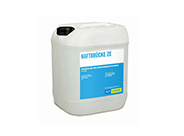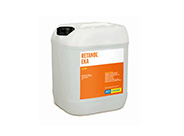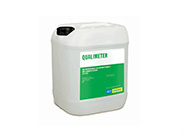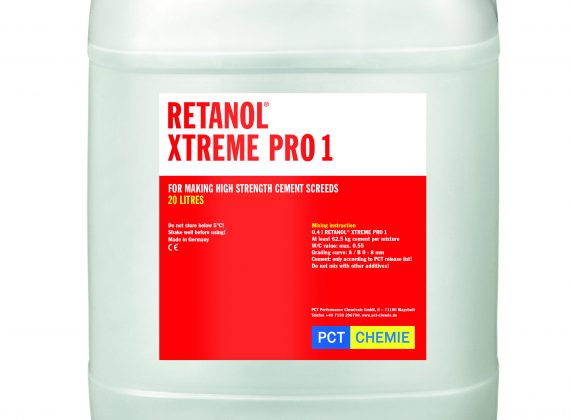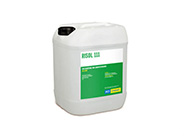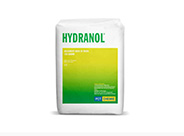Description
As explained in the Technical Data Sheet (see the link above), PCT ZE BONDING AGENT provides a robust bond between the cementitious substrate and the subsequent new screed. This product is also suitable as a bonding agent on to resin damp proof membrane coatings provided they are installed as per the manufacturer’s recommendations, adequately sand blinded and fully cured. PCT site inspection and technical assessment are required.
- It’s unique, and is suitable for internal and external applications.
- High moisture resistance with no re-emulsification once dried.
- It can be universally used to bond all cementitious screeds to suitable substrates.
STANDARDS AND DIRECTIVES
BS 8204, DIN EN 13813, DIN 18353, DIN 18560 and the customary industry practices and standards for making bonded screeds are applicable.
SUBSTRATE REQUIREMENTS AND APPLICATION
In order to achieve good adhesion, a clean and sound substrate is essential. The substrate has to be prepared appropriately before the new PCT RETANOL® screed is installed, ideally by mechanical preparation. To increase working times the substrate can be wetted up to 24 hrs before and should be damp (do not allow puddling) when the new PCT ZE BONDING AGENT and screed are installed.
For bonded PCT RETANOL® screeds of quality CT-C40, concrete substrates of strength class C20/C25 are usually sufficient. For higher strength classes (> CT-C50) and for fair-faced bonded screeds applied at layer thicknesses above 40 mm the substrate must comply with strength class C25/C30. The average tensile strength of the surface must be 1.5 N/mm² (smallest single value: 1.2 N/mm²).
The surface of cement-based substrates must be clean, absorbent, load bearing and firm. All soft flaking layers and areas affecting the bond strength must be removed entirely by mechanical preparation and/or shot blasting. Any cracks in the substrate must then be durably closed and force-bonded with a suitable resin and mechanical anchors in accordance with customary industry practices and standards (standard corrugated connectors and simple, thin steel bolts are insufficient). The substrate must be inspected to evaluate if any mechanical preparation is required prior to the application of the PCT ZE BONDING AGENT. The substrate can be covered by a functioning resin based Damp Proof Membrane, installed as per manufacturer’s recommendations, fully cured and sand blinded creating a good mechanical key. All substrates must be dry, firm, free from dust and water-soluble materials, excess adhesive residues, and any other barriers to adhesion. Surface contamination such as residues of bitumen, grease, oil, wax and polish etc. should be removed by the appropriate mechanical method.
Important: All cementitious substrates, (concrete and screed) must be wetted. Before wetting the surfaces, or applying the bonding coat, all concrete substrates, especially after mechanical preparation, must use high-pressure water cleaner for precision cleaning. The dirty water must be removed with a suitable wet vacuum cleaner.
LIQUID RESIN DAMP PROOF MEMBRANE PREPARATION
The areas treated with reaction resin must be liberally blinded with kiln-dried quartz sand (grit size at least 0.8 – 1.2 mm!). If 0.8 –1.2 mm kiln dried sand is unavailable, all sizes between 0.5 mm and 2.00 mm can be used. Coverage rate of sand min: 3 kg/m². As an example, apply enough kiln-dried sand to allow walking on with no resin sticking to your shoes. All excess and not fimly bonded sand must be entirely removed after the resin has cured.
MIXING INSTRUCTIONS
Best results are obtained by mixing 1 bag of cement at a time. Fill a mixing vessel with approximately 6 litres of water, add 150 ml of PCT ZE BONDING AGENT then slowly add 1 x 25kg bag of cement and mix with an electric whisk until a pliable (but not liquid) slurry is obtained using a maximum 10 litres of water. The mixing time is 3 minutes. This ensures proper blending of the cement and PCT ZE BONDING AGENT. Do not mix in a screed pump!
GENERAL GUIDELINES
Only cements complying with the PCT Cement Approval List may be used in combination with PCT ZE BONDING AGENT. One mixture provides enough bonding coat for a surface area of approx. ≥ 10 – 12 m², depending on the porosity and other aspects of the substrate. CAUTION! As with all bonded screed applications, no vibration must pass through the slab or surrounding structure while the new screed is being installed. Vibration after installation may also cause issues.
APPLICATION
Spread the mixed PCT ZE BONDING AGENT on to the prepared substrate with a hard/stiff broom. Ensure wet-on-wet application, i.e. cover the applied PCT ZE BONDING AGENT with PCT RETANOL® screed immediately to prevent premature drying as per the applicable recommendations and Technical Data Sheets. Any dried (matt or light-coloured) PCT ZE BONDING AGENT, not covered with screed, is unusable and must be recoated!
PRECAUTIONS
In the event of contact, wash off from skin before drying takes place. Any material splashed into the eye, mouth or nose should be washed away immediately with clean water.
Avoid ingestion. Non-toxic and small amounts are unlikely to cause more than temporary discomfort. If large amounts are swallowed seek medical advice. For the latest health and safety information on this product consult the current Health and Safety Data Sheet.
Shelf life of 9 months stored in ideal conditions.
All of the above product information is based on extensive practical experience and tests implemented by PCT Performance Chemicals GmbH. However, it is not possible to take all construction site conditions into account and to give suitable instructions for use in each case. It is therefore recommended to verify the applicability, appropriateness and practicability of this information and the intended measures by means of individual tests. PCT is responsible for the accuracy of this product information and the described properties as well as for the effect of the product. PCT reserves the right to change the product specifications. If the site is or has been supervised by PCT the user is under no obligation to check applicability and appropriateness.


